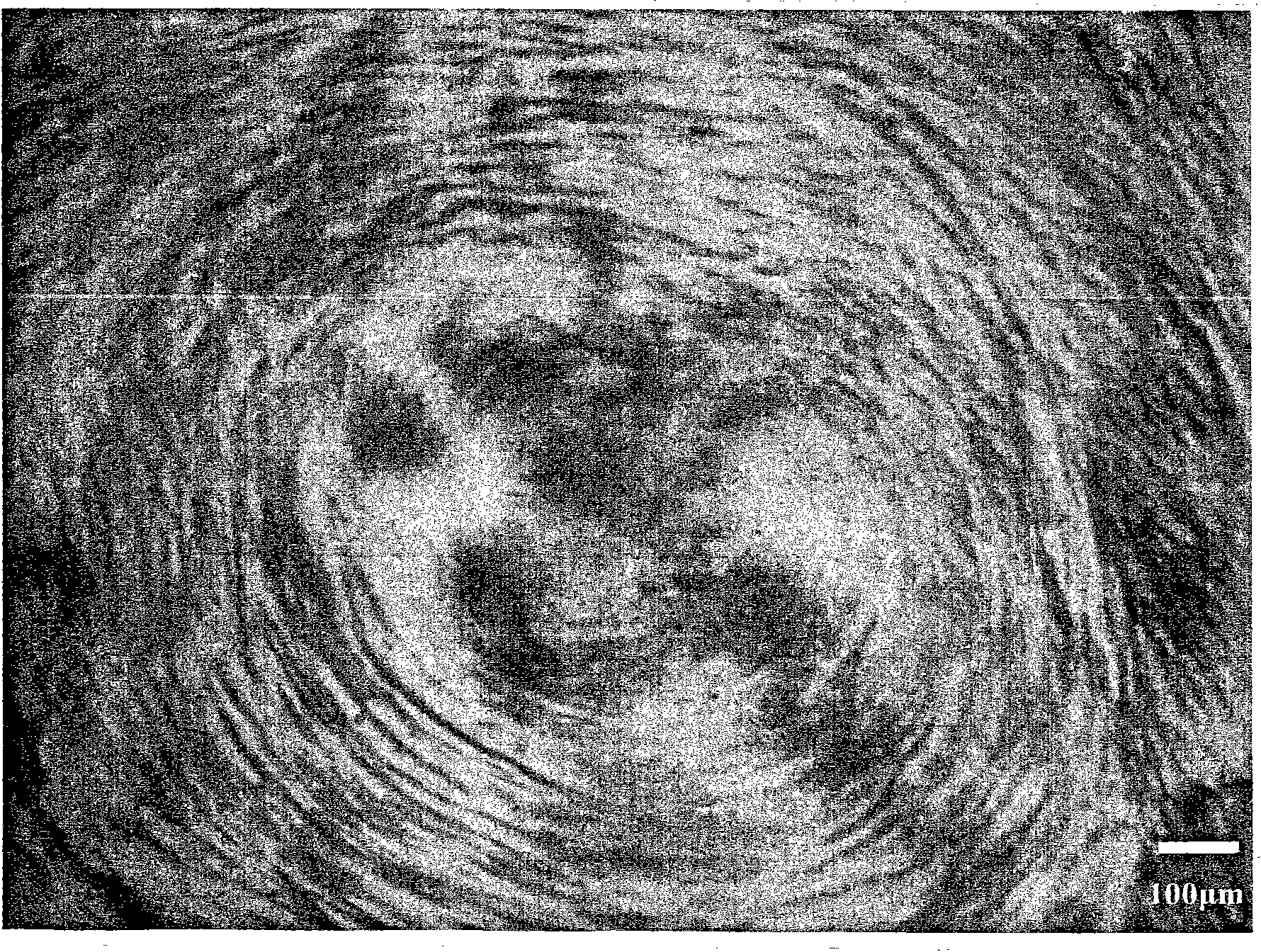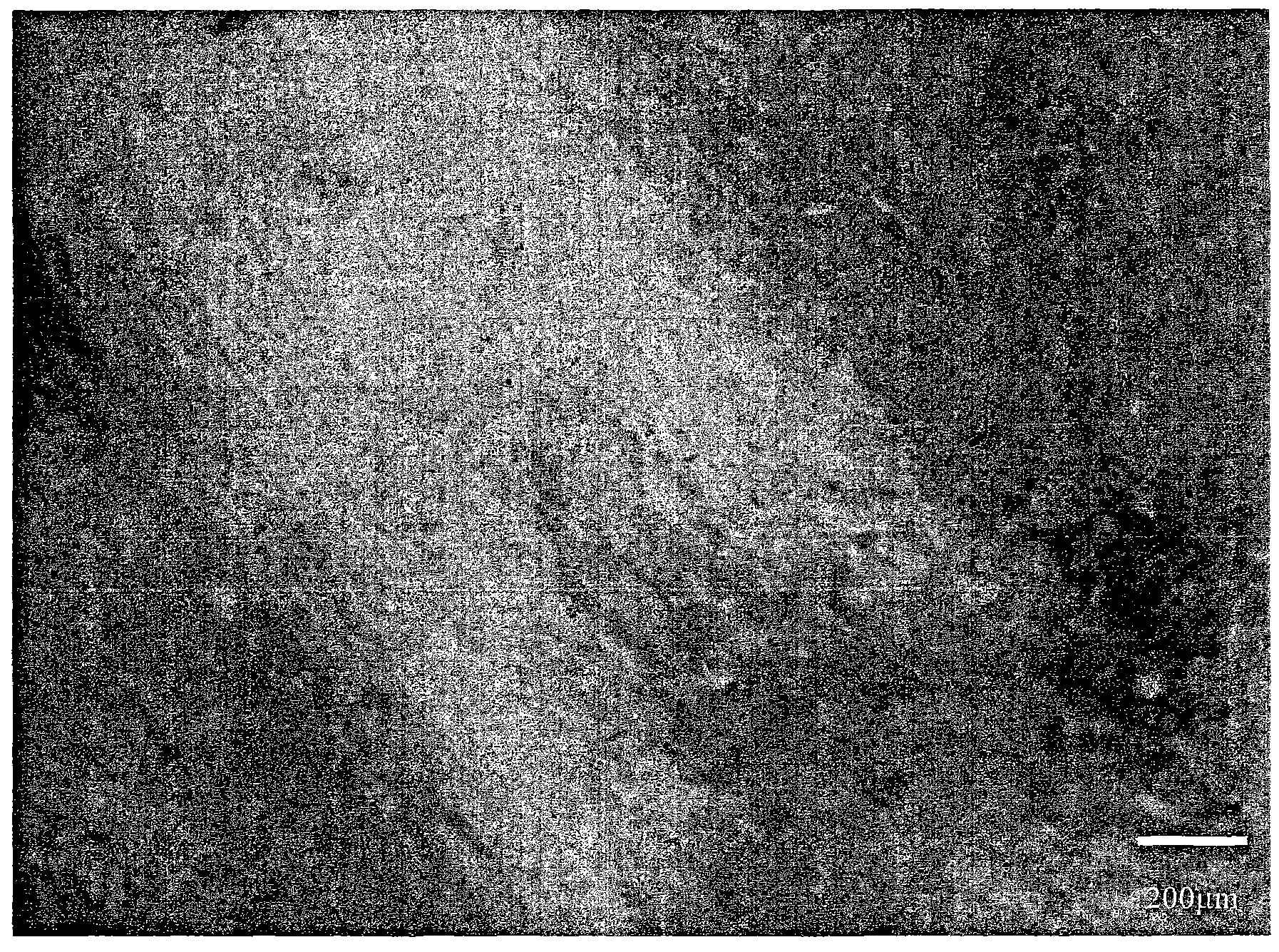Method for extracting microcrystalline cellulose from sea squirts and preparing lyotropic cholesteric crystal
A technology of microcrystalline cellulose and cholesteric liquid crystal, applied in the field of liquid crystal materials, can solve problems such as the blank of ascidian cellulose, and achieve the effects of stable suspension, simple operation and environmental friendliness
- Summary
- Abstract
- Description
- Claims
- Application Information
AI Technical Summary
Problems solved by technology
Method used
Image
Examples
Embodiment 1
[0044] Example 1. A method for extracting microcrystalline cellulose from sea squirts. Include the following steps:
[0045] (1) Soak and wash the sea squirt with distilled water, dissect the sea squirt and discard the internal organs, leaving only the coat of the sea squirt, and then scrape off the outermost layer of thin skin and discard it, leaving only the rest;
[0046] (2) Soak the retained vesicle with strong alkali for 12 hours to remove the protein and lipid contained therein;
[0047] (3) Under the condition of 65°C, react the capsules from which proteins and lipids have been removed in a buffer solution containing bleach made from acetic acid and sodium hydroxide for 3 hours, and repeat this step 5 times, each time Renew the aforementioned buffer solution;
[0048] (4) Place the sample obtained in step (3) on a watch glass, and then put it into a constant temperature blast drying oven to dry at 40°C;
[0049] (5) After drying, pulverize it to micron or millimete...
Embodiment 2
[0052] Example 2. A method for extracting microcrystalline cellulose from sea squirts. Wherein the step (2) is to soak the retained vesicle with strong alkali for 24 hours to remove the protein and lipid contained therein; said strong alkali is 5wt% sodium hydroxide solution. Step (3) is to react the capsules from which proteins and lipids have been removed in a buffer solution containing bleach made from acetic acid and sodium hydroxide at 90°C for 1 hour, and repeat this step twice, each time Both need to refresh the aforementioned buffer solution; the bleaching agent is sodium chlorate. Step (4) is to place the sample obtained in step (3) on a watch glass, and then put it into a constant temperature blast drying oven to dry at 60°C. All the other are with embodiment 1.
Embodiment 3
[0053] Example 3. A method for extracting microcrystalline cellulose from sea squirts. Wherein the step (2) is to soak the retained vesicle with strong alkali for 6 hours to remove the protein and lipid contained therein; said strong alkali is 10wt% potassium hydroxide solution. Step (3) is under the condition of 40 ℃, will remove protein and lipid in the buffer solution containing bleaching agent made with acetic acid and sodium hydroxide to react for 5h, this step reaction is repeated 8 times, each time Both need to refresh the aforementioned buffer solution; the bleaching agent is sodium chlorite. Step (4) is to place the sample obtained in step (3) on a watch glass, and then put it into a constant temperature blast drying oven to dry at 20°C. All the other are with embodiment 1.
PUM
| Property | Measurement | Unit |
|---|---|---|
| Ph | aaaaa | aaaaa |
Abstract
Description
Claims
Application Information
 Login to View More
Login to View More - R&D
- Intellectual Property
- Life Sciences
- Materials
- Tech Scout
- Unparalleled Data Quality
- Higher Quality Content
- 60% Fewer Hallucinations
Browse by: Latest US Patents, China's latest patents, Technical Efficacy Thesaurus, Application Domain, Technology Topic, Popular Technical Reports.
© 2025 PatSnap. All rights reserved.Legal|Privacy policy|Modern Slavery Act Transparency Statement|Sitemap|About US| Contact US: help@patsnap.com



